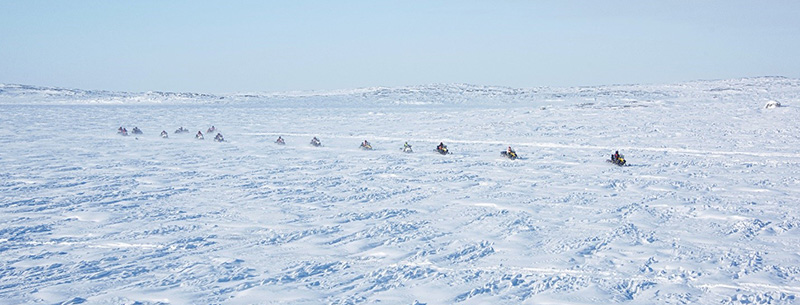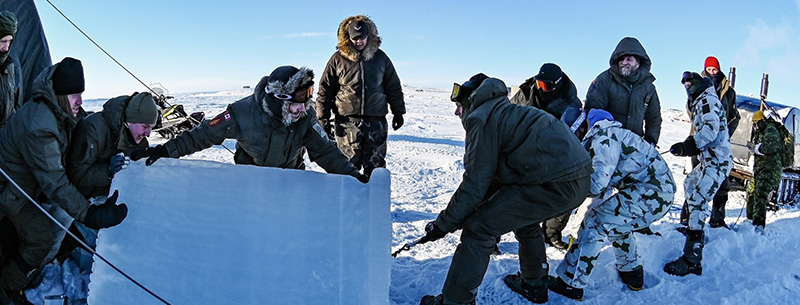Braiding Indigenous and Western knowledge
October 1, 2025 - Defence Stories
Estimated read time – 1:15

Caption
A group of snowmobiles travels in a single-file line across a vast, flat snow-covered landscape. The terrain is expansive and open, with distant hills or ridges visible on the horizon. The sky is clear and blue, suggesting calm weather conditions in this remote, wintry environment.
The Arctic as we know it is changing. The ice is melting, the borders are opening, the ocean sounds different. With these changes, the Canadian Armed Forces (CAF) will need to increase their presence in the area. Defence Research and Development Canada (DRDC) has already started extensive research in the Arctic area to support this with science and technology. But no one knows the Arctic better than the Indigenous communities who live there. Their knowledge is invaluable.
DRDC has a history of engaging with Indigenous communities through research projects. For example, DRDC’s Toronto Research Centre is researching Indigenous clothing, to inform the next-generation cold-weather gear, so CAF members stay warmer, move more freely, blend into the northern environments, and reduce cold-weather injuries during operations. There is also a project financed by the Canadian Safety and Security Program that is analyzing the safety of the water and the fish for consumption in the Arctic area. Indigenous knowledge is paramount, and DRDC knows that the best way to support CAF operations is collaboration between Western science and Indigenous knowledge.

Caption
During Dive Task Force wearing heavy cold-weather clothing, including insulated coats, gloves, and hats, work together to move a large block of ice in a snowy outdoor setting. The members set up equipment and prepare the dive zone during Operation NANOOK-NUNALIVUT in Rankin Inlet, Nunavut on March 6, 2023. The sky is clear and blue. Tents and equipment are in the background.
“Long before climate change and geopolitical competition made the Arctic a focal point, Indigenous communities had developed sophisticated ways of reading the environment, managing risk, and ensuring survival. Today, those same insights are vital for situational awareness, environmental monitoring, and operational decision making. Scientific models and satellite imagery offer one perspective, but Indigenous knowledge provides ground-level validation and context that makes data usable and reliable. Canada’s own Arctic and Northern Policy Framework recognizes Indigenous and scientific knowledge as equally valid contributors to decision making, and this equal footing strengthens the quality and legitimacy of decisions taken,” Michael Hosken, Community Resilience Research portfolio manager at Centre for Security and Science said.
To find out more about the Indigenous communities and how their knowledge is impacting the research at defence, read the newest DRDC spotlight (accessible only on the National Defence network).